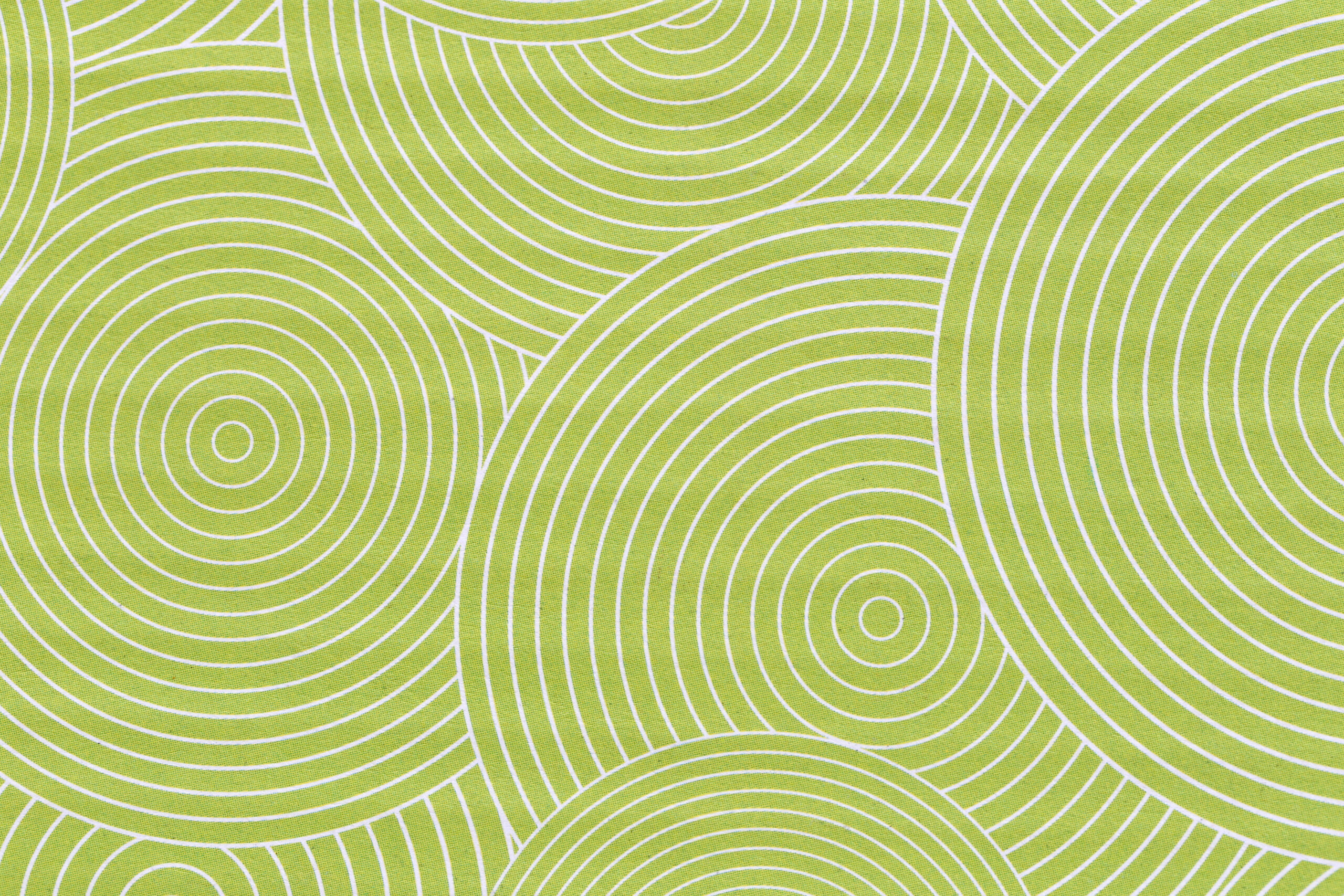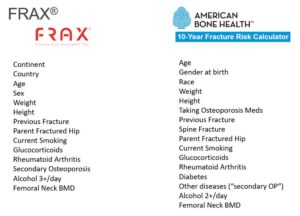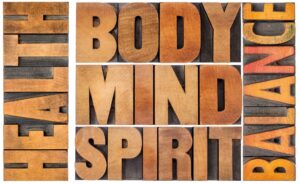
22 Aug What is Your Fracture Risk?
On your DXA report you’ll see percentages assigned to your “10-Year Fracture Risk” – one for the hip and one for a “major osteoporotic” fracture in the next 10 years.
They say that if the percentage for the hip is > 3%, or the percentage for the major osteoporotic fracture is > 20%, we are at “high risk.”
Doctors will use these numbers as flags to consider our candidacy for bone medication treatment therapy.
But what do WE do with these numbers?
How do we live our life based on a % of risk?
Until this summer I had never fractured a bone in my life!
But, recently, in a flash, the sidewalk and I had a very abrupt encounter. This unfortunate experience was fueled by our exuberant, loveable, extremely strong, 47lb puppy and another dog that was being reactive. I landed straight down on my bent left knee and cracked my kneecap. Ouch!
And, I thought to myself, how ironic is this that I’m teaching a webinar next week on how to reduce your fracture risk with a balanced body, mind, and spirit?
My kneecap didn’t break in half or shatter. Maybe because of this, the doctors don’t consider this a fragility fracture. I also read that fractures of the hip, vertebrae, forearm, shoulder, ribs, shin, and pelvis are regarded as osteoporotic fractures, while fractures of the ankle, hands, feet, skull, face, and kneecap are generally not. And there is debate about this.
I know many of you who have had fractures say there was a lot of force behind it even if you fell from a standing height when it happened. I feel the same way.
So, whose to know if this was due to my low bone density or really the amount of force behind the direct hit when I slammed onto the sidewalk.
How do we really know our fracture risk?
The fracture risk percentage that is automatically included in our DXA report is calculated by FRAX ®, a fracture risk assessment tool created by the University of Sheffield.
The criteria evaluated by FRAX (or FRAXplus) or other self-administered calculators like the American Bone Health fracture risk calculator is rather limited and leaves no room for nuance.

The result is presented to us as a foregone conclusion on our risk for fractures even though it does not account for all the contributing factors that can create imbalance in our osteoblasts and osteoclasts over time, nor does it consider if we can make any substantive lifestyle changes in the future.
These calculators are a fine tool for research or for medical treatment markers but they are not practical for the patient. They leave us no closer to understanding what we can or cannot modify over time to reduce our risk.
What do we do with a % chance?
The intention is that this informs what we will chose to do to ensure appropriate caution in our daily activities – but because a percentage makes very little sense to us, we’ll be more likely to ignore it than do anything about it.
How do we define what is appropriate for us and our lifestyle based on probabilities? How do we really know what is risky for us? And, more importantly, how do we reduce that risk? What are our contributing factors to fracture? What can we modify? And how will it make a difference?
We’re often left with more questions than answers.

Where we can find the most answers is looking at the contributing factors to low bone density.
This is often referred to causes of “secondary osteoporosis”. “Primary” osteoporosis is dismissed as a matter of age, but let’s consider that age is a matter of time when one or more of the contributing factors for “secondary” osteoporosis have had time to manifest.
To really reduce our fracture risk, we need to consider each of the contributing factors that may be relevant to us so that we can gain a more insightful, viable, plausible, even actionable perspective.
Fear is debilitating. Knowledge is power.
First, we need to get clear on how our bones operate.
Then understand what causes fractures. This can be summed up as: weak bones, falls, and poor posture or movement techniques.
And then, understand, what factors contribute to weak bones, falls, or poor posture?
This is where we can figure out what we can do differently.
There is more we can do to be successful than is often shared or calculated by the Risk Assessment Tools.
We have to take all of these factors into account and decide what applies to us:
- Gravity
- Nutrition
- Other disease states & medications
- Stress
- Smoking
- Alcohol
- Genetics
- Gender
- Age
You’ve probably seen a similar list in a flyer or infographic somewhere but I designed a free webinar to walk you through them and explain in more detail how these really relate to bone health. The goal is to empower you to come to your own insights into what practical approaches you can take to influence your own risk of fracture.
I want to help you discern what is applicable to you so you can take effective action for yourself, be successful in your bone health journey, and not just live in fear of a nebulous risk.
I get it, we want to know how do we reduce our risk for fractures and we want simple answers but the truth is, the answer is slightly different for each of us. There is not one single thing that will make the difference in our bone health – not just yoga, not just weight training, not just eating healthily or supplementing, not just bone drugs, not just addressing underlying causes, etc..
It’s going to take a unique combination of all those things to make a difference for each individual.
It’s a puzzle. And it’s going to take a little work on your part to figure it out but you’re in the driver’s seat!
The webinar is also intended to broaden your understanding of what is yoga. It’s more than just a fitness program.
Yoga practices support balance in our body, mind, and spirit (breath). Teaching our body, mind, spirit to be present in the moment supports our central physiological goal of maintaining homeostasis, to sustain the dynamic, self-regulating processes in our body including the regulation of our bone remodeling.
Yoga practices also help us cultivate discernment and in the webinar we review the list through the lens of yoga employing the yoga practice of svādhyāya (self-reflection) so you can be clear, empowered, nourished, and able to live your life.

Let me know what you think!
Please check out my free webinar How to Reduce Your Fracture Risk with a Balanced Body, Mind, and Spirit
Some things people have said about the webinar:
“Great session today!”
“You are amazing! Thank you for today’s excellent webinar — it helped me to see it all put together. You are a powerful thinker and teacher.”
“Thank you for a great webinar, very informative and interesting, with a different perspective and way of interpreting the minefield of information out there.”
“It’s good to hear things put in a different way. The whole of life is about informed choices and knowledge.”
“My friend forwarded your webinar to me and she’s so right, it was fascinating!”




No Comments